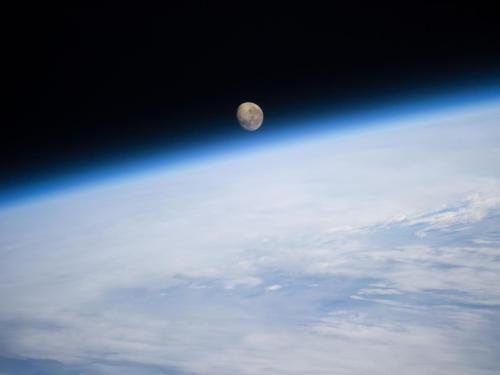

Stories of daring, stories of technological feats, stories of prevailing against the odds ... these are the stories we tell at the National Air and Space Museum. Dive in to the stories below to discover, learn, and be inspired.
Showing 1 - 10 of 156

March 27, 2025
We pick up where Part One left off! When you hear 'space race' you probably (correctly) think about the 1960s Soviet Union v. U.S. race to put an astronaut on the Moon. But a few hundred years before, the space race was all about Venus.

March 20, 2025
Aviation and space in the news.

March 20, 2025
An interview with Dante Lauretta, NASA's principal investigator on the OSIRIS-REx mission. In his new book, The Asteroid Hunter, Lauretta recounts the sample-return mission that brought rocks and dust from the asteroid Bennu to back to Earth.

March 12, 2025
When you hear 'space race' you probably (correctly) think about the 1960s Soviet Union v. U.S. race to put an astronaut on the Moon. But a few hundred years before, the space race was all about Venus.

December 18, 2024
Weather phenomena across the solar system are stranger than scientists could have imagined.

November 14, 2024
A moon is a planetary body that goes around another planetary body. Usually, this is one or more moons going around a planet, but it doesn’t have to be a planet. In Star Wars, the Death Star is not a moon because it isn’t a naturally occurring satellite: the International Space Station, the Juno spacecraft orbiting Jupiter, or any of the telecommunications satellites we rely on in low Earth orbit are satellites, but are not moons.

October 08, 2024
Humankind has known about them for thousands of years. Mercury, Venus, Mars, Jupiter and Saturn are all visible in the night sky with the unaided eye. As such, these planets have been known for thousands of years and there is no one person who can be credited with discovering these planets. These planets appear as bright objects that do not shimmer, like stars do.

September 26, 2024
What if there are intelligent lifeforms elsewhere in the universe? And what if all we need to do to find them is to listen to the right radio frequency at the right time?

September 23, 2024
Recent discoveries and news in aviation and space.

September 23, 2024
In its operation for over 25 years, NASA’s Chandra X-Ray Observatory has changed our understanding of the universe.